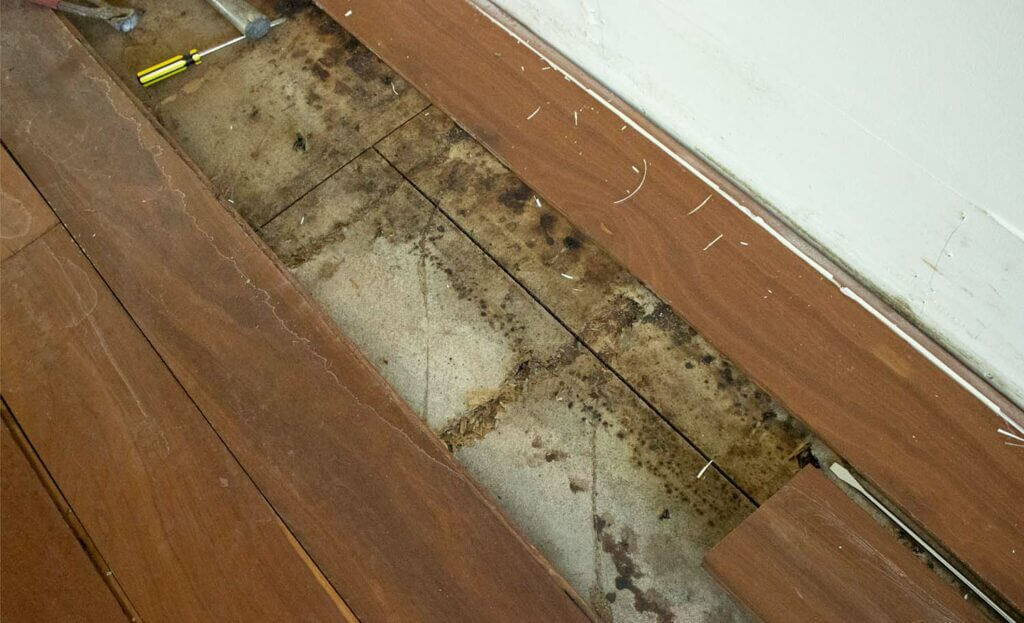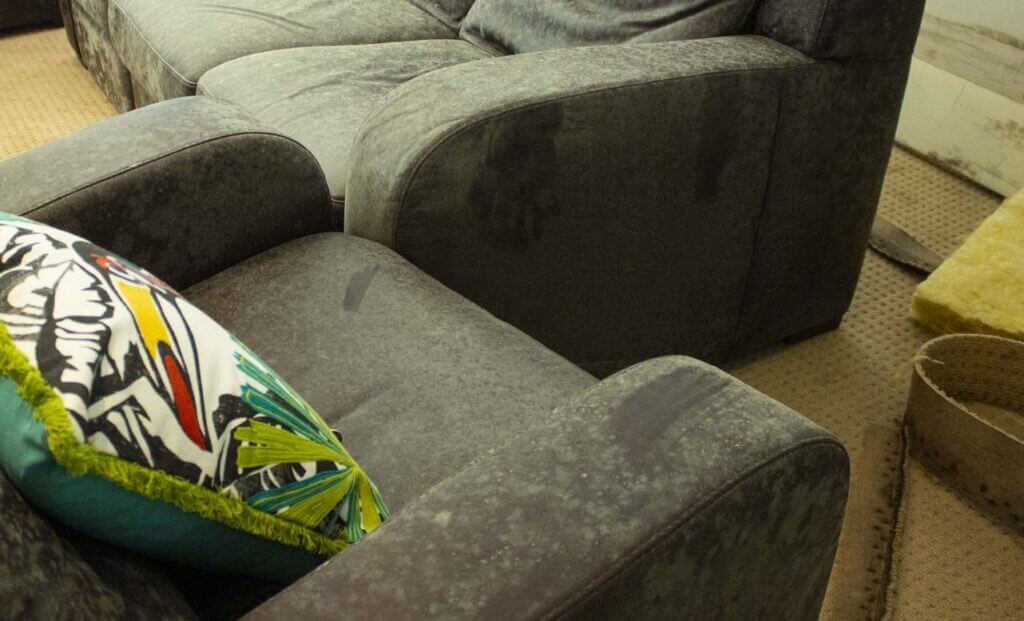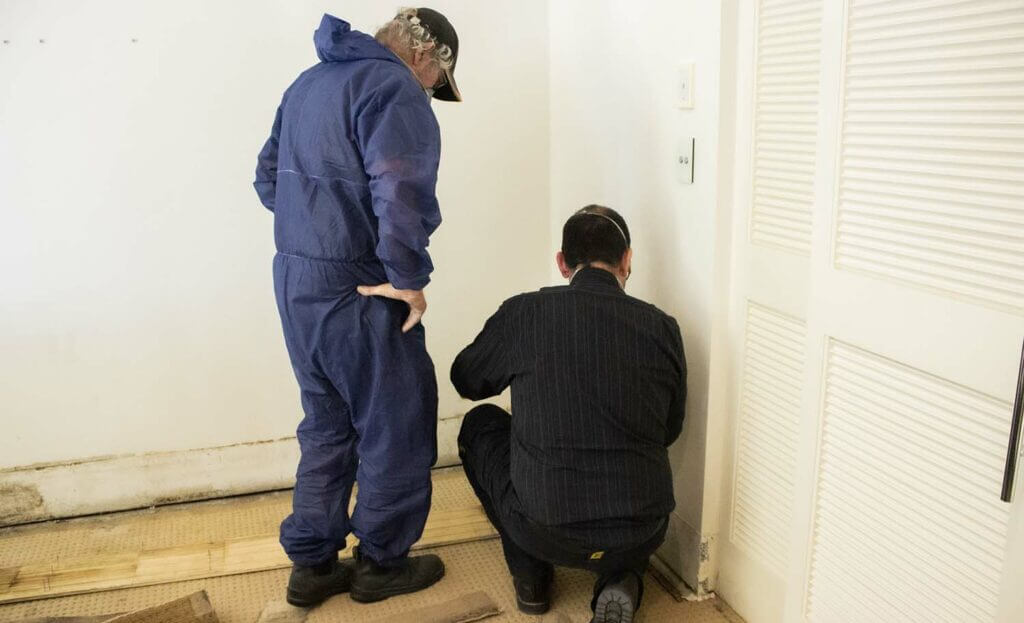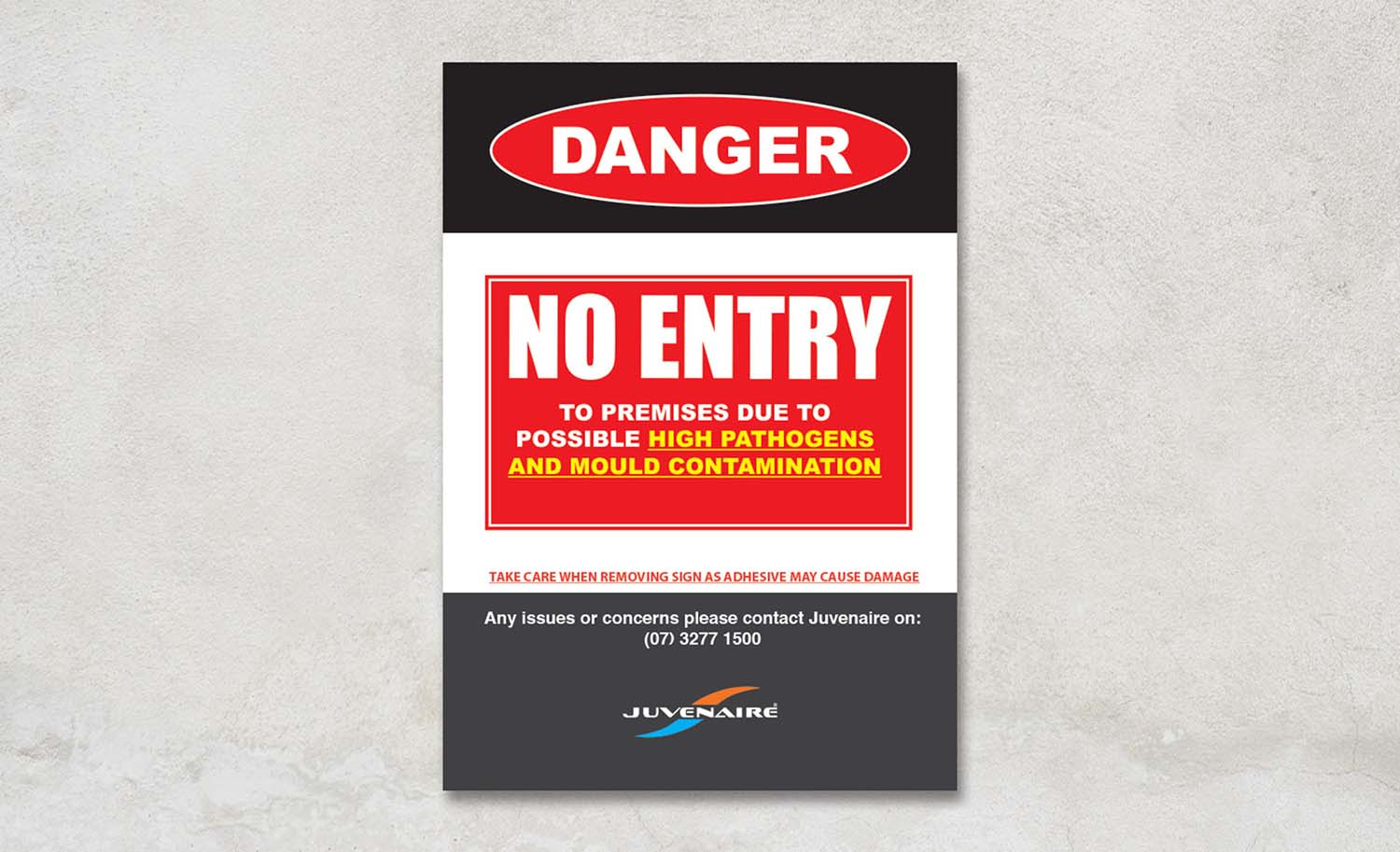For over 25 years Juvenaire has successfully completed countless mould remediation projects across Queensland. However, new challenges continue to emerge more often than not. This particular project is not an exception, with three storeys of mould contamination presenting its fair share of challenges.
Water damage is a common occurrence in households. Plumbing issues, water leaks, appliance breakdowns and water overflows all of which often causes extensive damage and subsequent mould growth. Mould growth can also be hidden behind building materials and walls and thus is not always easily observable.
Given the right conditions, mould spreads at an extremely rapid rate by releasing airborne spores in large amounts. If inhaled, mould spores can cause extreme respiratory issues and with continued exposure, can cause major health concerns. Often recommended is a vinegar solution to clean mould and although it may destroy the fruiting body of the mould, it will not remove the Mycelium (branching filaments) ‘from its roots’ nor does it remove mould staining. This is why professional remediation combined with specialist cleaning agents becomes extremely vital.
Professional restorers and technicians have the knowledge and training to deal with mould even in the most challenging circumstances. One such example is the aforementioned Gold Coast property that was recently restored by Juvenaire. We will take a thorough look at the process undertaken by our expert technicians further into this story.
Mould Decontamination Project Overview
Glittering water views from every window is how one would normally describe this three storey multi-million dollar GC vacation home. In this instance however, it could only be described as an uninhabitable mould infested three storey property.
The property was vacant for three months before the mould infestation was discovered. The owners of the property are expatriates and oftentimes the house is left vacant for extended periods. During its most recent period of vacancy, a major water leak made its way from the terrace of the home (on the top most floor) down to the ground floor. This water damage was left undiscovered during this time and eventually, mould inundated all three storeys of the house.
Phase 1: Initial Visit and Scoping
Juvenaire’s Senior Project Manager was in charge of the remediation on this property. His expert knowledge and 15 years of industry experience saw the project to successful completion. On the initial visit, the entire house was scoped for visible signs of mould growth and water damage. An assessor’s initial visit and report helped guide them to the potential source of the water and obvious areas that were identified for remediation.

The pathway of the water leak was identified and found to be mould infested. Cracks in building materials (due to absorption of water) was present on each level in the same vertical location. Nearby bedrooms were also contaminated due to spores travelling throughout the house and germinating on non water damaged regions.
This was due to the high humidity environment inside the premises while being locked up. Some household contents such as the sofa was so heavily contaminated that it was deemed unsafe for human use and was therefore marked for safe disposal.

Phase 2: Further Investigation
Our Technicians continued to investigate the extent of the mould contamination throughout the property. Visible signs of mould is often indicative of the presence of mould behind walls and ceilings. The second phase of the remediation process is to carry out an invasive investigation. This included removing the skirtings on each floor for a quick indication of the presence of hidden mould.

Sections of walls and ceilings were also removed to enable further inspection. A specialist camera is often used to check for the presence of mould in ceilings and inaccessible areas. This deep examination revealed the presence of mould behind walls and ceilings; extending all three storeys along the pathway of the water leak.
Phase 3: Mould Decontamination Stage 1
Because mould spores are usually airborne, Juvenaire utilises Air Scrubbers throughout the property. Air Scrubbers collect mould spores from each quarantined region of the home. Our Air Scrubbers are essential for mould remediation projects as they exponentially reduce the number of spores in the air and greatly improve Indoor Air Quality (IAQ). They also remove the dust made airborne while removing sections of the walls and skirtings.

Once all the contaminated sections are identified for remediation, our technicians get to work. Every room is examined and all contents are cleaned, restored and the rooms are isolated to prevent cross contamination. Carpets and other contents that could not be restored were removed and disposed of safely. While items deemed restorable were wiped down with specialist mould cleaning agents.
Phase 4: Mould Decontamination Stage 2
Major remediation work began with sections of walls and ceilings being stripped out and disposed of. We then used specialist mould cleaning agents to destroy the mould and remove staining building structures.
This stage is often the most important as it ensures thorough remediation has been completed. Once these areas have been cleaned thoroughly, Air Movers and Dehumidifiers were engaged (specialist drying equipment). This thoroughly dries water damaged materials, whilst Air Scrubbers continue to remove airborne particulates and other contaminants.
Phase 5: Clearance Report
Once the remediation and drying had been completed, all remaining building materials that had been affected were treated. A project manger will then inspect the site to ensure that a high quality completion has been achieved. Testing of the Indoor Air Quality and surface samples are sent off to an independent lab for testing the quantity of mould spores remaining in the home.
The reading had fallen within a normal mould ecology and a completion certificate was subsequently issued. The restoration project was deemed successful and transferred on to building contractors for the reconstruction of stripped out areas.
Had any issues with mould lately? Check your insurance policy to see if you’re covered.
For more info on mould decontamination click here
